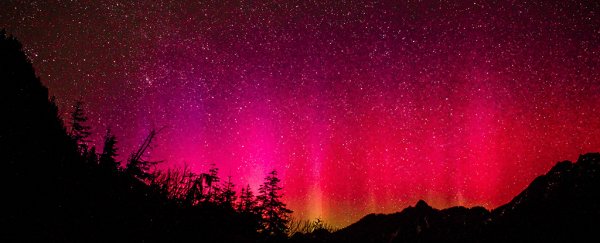More than 2,600 years ago, strange red clouds over Mesopotamia drew the attention of soothsayers across the land. Their royal reports have now helped confine the date of a severe solar storm that washed over the planet.
Based on readings of carbon isotopes trapped in tree rings deposited around that time, astronomers already suspected there was a period of intense solar activity around the middle of the 7th century BCE.
And it seemed like it had pretty far-ranging effects. Earlier in the year, geologists reported similar signs of a storm from around this period in traces of radioactive particles buried in Greenland's ice.
To add detail and attempt to confirm the date, a team of Japanese researchers went hunting for eye-witness accounts of the kinds of spectacular light shows that typically mark massive geomagnetic events like these.
Since the early 17th century, astronomers have had the benefit of using telescopes to record the Sun's weather by way of mapping the dark blotches on their surface.
These sunspot drawings provide modern researchers with a precise record to check when searching for long-term patterns in solar activity.
Before that, occasional observations from less well-equipped philosophers provided clues, usually in the form of changes in our own sky as charged particles collide with our upper atmosphere, creating spectacular displays called aurorae.
Even these scholarly records only go so far back.
Luckily for the researchers, the ancient lands of Assyria and Babylon were home to a slightly different kind of astronomer – one who looked for omens among the heavens.
When things got a bit weird overhead, these sky-watchers would note down the details on palm-sized clay tablets in cuneiform, recording the type of ominous event, maybe a prediction or two, and signing it off with their name and sometimes the date.
These could then be sent to government authorities, who would use the information to make important decisions.
After digging through translations of a number of Assyrian astrological tablets dated to the 7th and 8th centuries, the researchers eventually found three mentioning either a red glow, red clouds, or red covering the sky.
None of them came with a timestamp, but they were all signed off by a different author, either Issār-šumu-ēreš, Nabû-aḫḫē-erıba, or Zākiru, who each reported to kings of either Babylon or Nineveh.
It wasn't quite a jackpot, but it did demonstrate how alternatives to astronomical records could still be valuable resources in building up a picture of solar activity.
"Although the exact dates of the observations are not known, we were able to narrow the range considerably by knowing when each astrologer was active," says social scientist Yasuyuki Mitsuma.
The work of the three astrologers collectively covered a window of barely a quarter of a century, extending from 679 to 655 BCE.
Not only does this match with the dating of tree rings containing increased levels of carbon-14, the reports were written down nearly a hundred years before the previous record holder for the earliest reliable mention of an aurora.
"These findings allow us to recreate the history of solar activity a century earlier than previously available records," says Mitsuma.
"This research can assist in our ability to predict future solar magnetic storms, which may damage satellites and other spacecraft."
Solar storms of the magnitude that struck in 660 BCE could be far more common than we once thought. Part of the problem is the relatively short time we've been paying close attention.
By identifying clues in diverse sources – whether scholastic records of Sun spots, isotopes in tree rings and ice sheets, or vain attempts to predict the future in a blood red sky – we just might find enough data to help us predict that next devastating blast.
This research was published in The Astrophysical Journal Letters.
